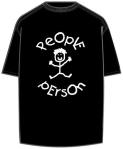 I understand the impulse to flesh out one’s career value with sweeping generalities:
I understand the impulse to flesh out one’s career value with sweeping generalities:
- I’m a people person (or, I’m really good with people; or, I like people).
- I’m very strategic.
- I’m attentive to detail.
- I’m very organized.
- I’m results oriented.
- I’m innovative.
- I think outside the box.
- I’m a change leader.
- I’m a team leader.
- I bring people together.
I discourage this approach in favor of a more specific, focused method.
To engage in a job-search-related conversation with such bland language is counterproductive and akin to omitting the baking powder from a chocolate cake. The conversation falls flat. That glazed-eyes look you evoke in your listener (e.g., hiring manager, recruiter, HR manager, networking contact, etc.) results.
What listeners desire is a vivid word picture that you paint using bold color strokes that evoke emotion and crystallize your value to them.
If you’re speaking with a hiring manager, and he’s looking for a sales manager who can take their down-trodden, global sales team from lagging sales to double-digit growth, then you’d best BE that person. Your words must serve as both frame and photo; you quickly frame the situation and then create a bold, focused snapshot that crops out unnecessary details, a word snapshot that illustrates you’ve been there, done that!
By snapping word pictures ahead of interviews (i.e., creating a targeted, crisp resume story and interview prep material), you’re equipped with a word story collection that you can tap for interviews.
Initially, you may be sifting and sorting through an amassment of 5, 10, 15 or even 25+ years of career snapshots. Many of these snapshots are only relevant to you, and not the listener, as they lack vivid focus, have too much background noise, or simply, aren’t relevant to the targeted listener who can impact hiring you or recommending you. Pack those irrelevant pictures away and maintain the relevant images top of stack.
To recap:
• Don’t be a “people person.”
• Be a problem fixer whose stories resonate with the listener’s needs (points of pain; areas where revenues need boosted, costs need contained, processes need streamlined, etc.).
• Show, through striking word snapshots that you have solved problems similar to the problems the company you’re targeting is facing.
• Be selective, identify the most relevant, compelling word pictures that illustrate your value to the individual you’re communicating to (versus spilling open a long album of word snapshots that will invoke boredom and frustration).
• Frame your picture (your frame should accentuate and introduce your picture story, not detract from it).
• Ensure you’ve used word snapshots that are colorful and sharply focused.
• Be humbly confident in your picture storytelling abilities; this positive energy will flow to the listener.
I agree Jacqui, a great resume is all about telling a great story. Books that are full of superlatives with no plot are boring! Same thing holds true for resumes.
Karen,
What a great analogy! Our role as resume strategists, indeed, is to unveil that plot and convey a compelling story to hiring managers, et al.
Thank you for offering your insightful comment!
Jacqui
Great article! Being a people person may mean that you pay too much attention socializing with either your co-workers or the public/customers without getting much done during your work day, so it’s critical that you define HOW you work with others to produce results for the company. It’s all about specific examples. Jacqui, I love how you use a picture frame to help fine-tune relevant accomplishments. Great visual!
Hi Lisa,
True (re: people person may indicate too much socializing 🙂 And, you make a good point why clarifying ‘how’ you apply this trait for the ‘good’ of a company is critical!
Glad you liked the picture frame example!
Thanks for stopping by!
Jacqui
If someone’s a people person, they don’t have to say so because it will shine through in the writing and speaking.
Great post!
Great point, Susan!
Show, don’t tell, right? It’s about concrete evidence of an ability.
Thanks so much for taking time to comment!
Jacqui
Jacqui, I love your photography metaphor! It’s a very effective way to help people remember to be more specific and focused in their writing as they portray their unique value propositions.
Thanks for another wonderful article!
Janet
Love the examples! Your word pictures always shine through well. Very creative and informative at the same time.